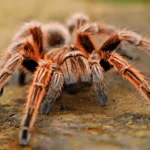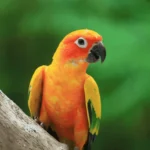Cockatoo is a common name that has 21 species of parrots from medium size to large size. Their scientific name is Cacatuidae. Adult parrot size is up to 24 inches depending upon the species. Most species have a life span of 25 to 60 years. They are found in the wild and groomed as pets. They also mimic the owner’s words. The most common thing that makes him different from other parrots is the crest of feathers on top of their head. These feathers can be lifted and lowered. Their foot and beak are the same as other parrots. All the species are found in Australia and the other islands around Oceania.
Table of Contents
Species Name:
Galah, Cockatiel, Long-billed Corella, Little Corella, Western Corella, Tanimbar Corella, (Sulphur-crested, Major Mitchell’s, Palm, Yellow-tailed Black, Red-tailed Black, Glossy Black, Gang-gang, Short-billed Black, White, Citron-crested, Molucaan, Blue-eyed, Philippine, Umbrella, Salman-crested)Cockatoo.
History:
The cockatoos originated around 60 million years ago in Australia and their surrounding regions. Their fossils give signs of their life at the time of dinosaurs. First of all, Europeans get attention during the Age of Exploration. During the 16th and 17thcentury when European explorers arrived in Southeast Asia and Australia, they encountered these birds and brought them back to Europe where they groomed them as a pets. During the 19th and 20th centuries, they become a common pet of home around the world. In the 21st century, these birds are protected by International laws.
Description:

Cockatoo species are found in different sizes and colors. Their heaviest weight is about two and a half pounds. They have a group of feathers on their heads known as crests. Crest shows different signals like excitement etc. They have a strong beak used for eating nuts and climbing on objects. They also have zygodactyl feet (two pairs of toes in opposite directions).
Sound:
Cockatoos produce a variety of sounds depending on the situation. If we take the example of the wild they produce the loud sound to attract attention or to express excitement. They produce softer sounds when they engage in social interaction. They also mimic some words, phrases, or tones which they learn from their owners. They also produce a hissing sound when they are scared.
Interesting Facts:
Cockatoos come under the list of the most intelligent birds in the world.
They have a remarkable life span of 40 to 70 years.
Their crest helps them in communication.
Some species of Cockatoos can mimic human speech.
They are highly social birds and live in flocks in the wild.
They have a strong beak that helps them to open the cracks of nuts and seeds.
They can communicate with other members from a large distance due to their loud sound.
Some species can also dance to music.
Sometimes they pull out their feathers to show the signs of stress or health issues to the owners.
Diet:

They are herbivorous and eat different types of plants depending upon species. Seeds and nuts are the primary source of food. They use their strong beak to open the crack. They also eat different types of fruits. In the wild, their diet varies according to the habitat they live but as pets, their owner provides them with all the necessary diet(nuts, fruit, seeds, eggs).
Behavior:
Cockatoos are highly social birds and mostly fly in flocks. Sometimes their flock exceeds 3200 thousand. They start searching for food in the daylight and prefer to sleep at night. Mostly cockatoos use their left foot for grabbing and eating the food. They also like to fly in the rain.
Breeding:
Cockatoos generally start reproduction at the full adult age (approximately 8 years old). Before that, they pair up in the flocks but weigh for the age of maturity for breeding. The mature female lays a single egg or up to eight eggs depending upon the size of the species in a whole tree. Greater-sized species lay one to two eggs and small-sized species lay eggs up to eight. Eighty percent of eggs are fertile. Mostly females warm the eggs. The incubation and hatching period for small breeds is 20 days and for large-sized breeds is 29 days. Their egg is oval and white.
Intelligence:

They are known for their intelligence. They can solve problems, use tools, communication, and mimicry. They know how to unlock the cage. They use sticks as drumsticks to drum on trees during courtship displays. They live in large flocks and for communication use body language and vocalizations. They can learn different sounds, including human speech, household voices, and even other animal voices.
Nesting Period:
The nesting period depends on different factors (size, food, weather conditions). Small species nesting period is of 5 weeks and Large species nesting period is of 11 weeks. If the young ones get proper and healthy food then they grow fast. If the weather of that environment is not suitable for them then the nesting period varies.
Predators and Threads:
According to my observation, some species of owls, Eagles, and Cats are observed hunting different species of cockatoos. Many lizards and snakes enter the hole of the tree where their nest is located and eat their eggs. Some species were to be found infected with malaria parasites and with common disease found mostly in parrots psittacine beak and feather disease (PBFD).
FAQs:
Q. 1 Which one has the greatest number of species among mammals, reptiles, arachnids, or Cockatoos?
Ans. Arachnid species are greatest in numbers compared to mammals, reptiles, and cockatoos.
Q. 2 Do Cockatoos bite?
Ans. Yes, Cockatoos bite with their strong beak when they feel stressed.
Q. 3 Can beginners keep cockatoos as pets?
Ans. No, beginners cannot provide them extra attention and care to keep them as pets which they need.
Q.4 Did they produce noise?
Ans. Yes, they produce loud sounds when they need attention or show excitement.
References:
- “The Cockatoos 1958”. Tate Collection: William Roberts 1895–1980. Tate Gallery. Archived from the original on 11 January 2012. Retrieved 12 December 2009.




Pingback: 14 Amazing Facts About Conures to Lift Your Spirits
Pingback: Quaker Parrot Care Guide – Amazing Facts, Diet & Tips